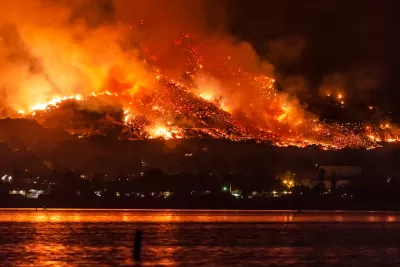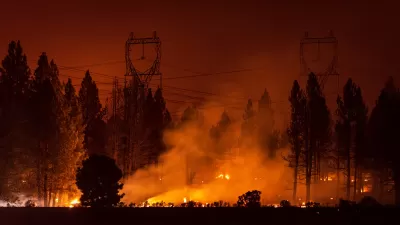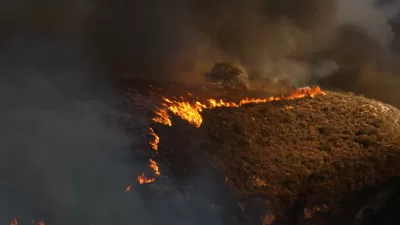Summer is just beginning, but wildfires in California have already burned more than 90,000 acres.

California's wildfire season has started intensely, with over 90,000 acres burned by June 20, stretching firefighting resources thin and prompting evacuations. As reported by Grace Toohey, perilous weather conditions, including strong winds, low humidity, and high temperatures, have fueled more than 30 wildfires from Los Angeles County to Colusa County, with two major fires rapidly surpassing 15,000 acres each. This early surge in wildfire activity is causing concern among officials about the upcoming hotter months and the potential for even more fires.
The National Weather Service has issued excessive heat warnings across much of Southern California, predicting temperatures up to 105 degrees, exacerbating the risk of wildfires. The recent fires have primarily been grass fires driven by windy conditions, with significant burns reported in the Post Fire near Gorman and the Sites Fire in Colusa County. Despite fewer overall fires compared to the five-year average, the acreage burned is significantly higher, indicating that the landscape is primed for rapid fire spread.
Experts like research ecologist Chad Hanson emphasize that climate change and weather patterns are influencing wildfire behavior, with higher global temperatures and extreme weather conditions adding challenges to fire suppression efforts. While not all wildfires are detrimental, as many ecosystems depend on post-fire habitats, the primary concern is the impact on human communities. Officials are advocating for a focus on protecting human life and development and urging the public to take preventive measures to reduce wildfire risks.
FULL STORY: California wildfires have already burned 90,000 acres, and summer is just beginning

Montreal Mall to Become 6,000 Housing Units
Place Versailles will be transformed into a mixed-use complex over the next 25 years.

Planetizen Federal Action Tracker
A weekly monitor of how Trump’s orders and actions are impacting planners and planning in America.

Four Reasons Urban Planners Can’t Ignore AI
It’s no longer a question of whether AI will shape planning, but how. That how is up to us.

Bend, Deschutes County Move to Restrict Major Homeless Encampment
City and county officials are closing off portions of an area known as Juniper Ridge where many unhoused residents find shelter, hoping to direct people to housing and supportive services.

High Housing Costs Driving Down Transit Ridership in LA
When neighborhoods gentrify and displace lower-income residents, transit ridership suffers, new research shows.

Iowa Legalizes Accessory Dwelling Units
A new law will allow property owners to build ADUs on single-family lots starting on July 1.
Urban Design for Planners 1: Software Tools
This six-course series explores essential urban design concepts using open source software and equips planners with the tools they need to participate fully in the urban design process.
Planning for Universal Design
Learn the tools for implementing Universal Design in planning regulations.
City of Mt Shasta
City of Camden Redevelopment Agency
City of Astoria
Transportation Research & Education Center (TREC) at Portland State University
City of Camden Redevelopment Agency
Municipality of Princeton (NJ)
Regional Transportation Commission of Southern Nevada





























